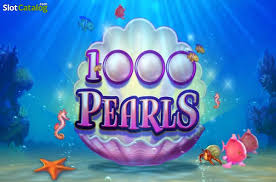The Underwater Arena: The Ecosystem of Fish Fury
In the vast depths of our oceans and waterways, a fierce conflict brews beneath the surface. This is not merely a tale of survival; it’s an epic saga encapsulated in the term Fish Fury. Here, we delve into the tumultuous world of aquatic life where battles rage not just for dominance but for mere existence. From territorial disputes to mating rituals, the aquatic realm showcases a remarkable spectrum of behavior that both fascinates and terrifies. Join us as we explore the undercurrents of this intricate ecosystem, unveiling the layers of complexity that make up the aquatic battle.
The foundation of any aquatic battle lies in its arena—the ecosystem. Understanding the environment where fish thrive provides context to their behaviors and interactions. In this section, we will explore the different habitats, the social structures within them, and how these influence the dynamics of Fish Fury.
Freshwater vs. Saltwater Habitats
The two primary categories of aquatic ecosystems—freshwater and saltwater—each have unique characteristics influencing the kinds of fish that inhabit gemwin.
Freshwater environments, such as rivers, lakes, and ponds, are relatively stable and often have lower salinity levels. They serve as vital habitats for species like trout, perch, and various types of catfish. These species often exhibit territorial behaviors, particularly during spawning seasons.
Saltwater habitats, including oceans and seas, are dynamic and diverse, housing a plethora of species from the colossal blue whale to the tiny clownfish. Marine environments can be incredibly competitive due to the availability of resources such as food and breeding grounds, leading to fierce rivalries among fish.
Understanding the distinctions between these ecosystems highlights how environmental factors contribute to the behaviors seen in Fish Fury.
Social Structures within Fish Communities
Fish are not solitary creatures; they often exist within complex social hierarchies. Many species form schools for safety against predators. Within these schools, dominant individuals may assert control over resources like food and mates, leading to skirmishes.
Moreover, certain species display fascinating social structures, such as the clownfish and their symbiotic relationship with sea anemones. Here, tensions can arise when multiple clownfish vie for dominance, leading to dramatic displays of aggression.
The diversity of social structures among fish not only enriches their lives but also creates a stage for conflicts that embody the essence of Fish Fury, wherein cooperation and competition intermingle.
Resource Scarcity and its Implications
The struggle for resources is a central theme in aquatic battles. Whether it’s food or space, fish often face scarcity, prompting aggressive behaviors. During times of abundance, fish may display more harmonious interactions, but as resources dwindle, competition intensifies.
For instance, during spawning season, male salmon aggressively defend their territories against intruders. Their vibrant colors and fin displays are not merely for show; they signal strength and fitness, crucial attributes in the ongoing battle for mating rights.
Such resource-driven conflicts illustrate how fish adapt their strategies based on environmental pressures, reinforcing the notion of Fish Fury as a constant cycle of battle and adaptation.
- Winning Strategies for Heimdall’s Gate Slot - April 5, 2025
- Understanding the Core Mechanics of VeloruDialinvest International N.V. Game - March 31, 2025
- Strategies for Winning Big on The Alter Ego Slot - March 31, 2025




















































Post Comment